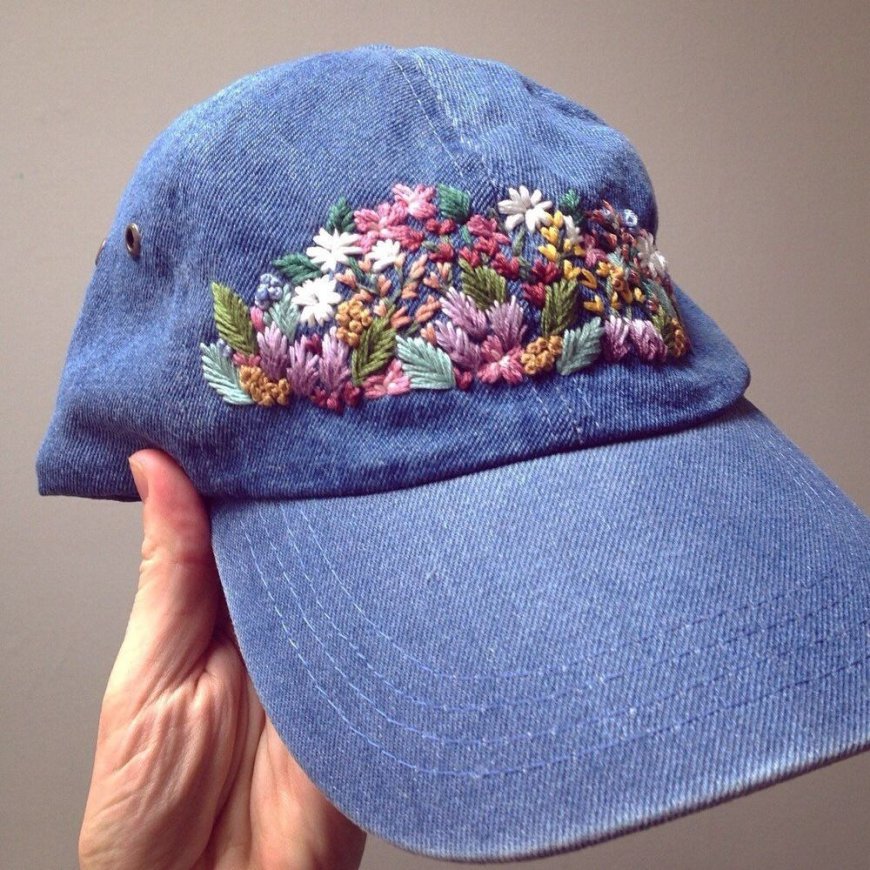How to Make Custom Hats and Caps
Do you want to know how to make the custom hats and caps then you are at the right place. Click the link to read more.

Custom hats and caps are not only fashionable but also an excellent way to express individuality, promote a brand, or celebrate a special event. Creating custom headwear involves several steps, from initial design to the final product. As we make modern custom hats in Dallas TX so in this article we will provide a comprehensive guide on how to make custom hats and caps, covering design, material selection, manufacturing techniques, and customization methods.
Designing Custom Hats and Caps
Understanding the Purpose
The first step in making custom hats and caps is understanding their purpose:
- Personal Use: Creating a unique piece for personal style.
- Promotional Items: Designing caps for businesses to promote their brand.
- Event Merchandise: Custom hats for events like sports games, concerts, or parties.
Creating the Design
The design process involves:
- Sketching: Initial sketches of the hat or cap design, considering shape, style, and functionality.
- Digital Design: Using design software (like Adobe Illustrator) to create a digital version of the design, which helps in refining details and colors.
- Logo and Text: Adding logos, text, or other graphics that will be featured on the hat.
Material Selection
Choosing Fabrics
Selecting the right fabric is crucial for the hat’s functionality and appearance:
- Cotton: Breathable and comfortable, ideal for casual and promotional hats.
- Polyester: Durable and quick-drying, suitable for sports caps.
- Wool: Warm and insulating, perfect for winter hats.
- Blends: Combining materials like cotton-polyester blends for a balance of comfort and durability.
Selecting Additional Materials
Other materials to consider:
- Brim Material: Usually made from plastic or a more rigid fabric to maintain shape.
- Lining: Adding a lining for extra comfort and sweat absorption.
- Closure: Choosing the type of closure (snapback, Velcro, fitted) based on the hat’s intended use.
Manufacturing Techniques
Cutting and Sewing
The manufacturing process starts with cutting and sewing the fabric:
- Pattern Making: Creating a pattern based on the hat design.
- Fabric Cutting: Cutting the fabric pieces according to the pattern, ensuring precision to maintain design integrity.
- Sewing: Sewing the pieces together, starting with the crown and then attaching the brim and closure. Professional sewing machines ensure durability and neat stitching.
Adding the Brim
Attaching the brim involves:
- Stitching: Securely stitching the brim to the crown of the hat, ensuring it is aligned properly.
- Reinforcement: Adding extra stitching or a lining to reinforce the connection between the brim and the crown.
Customization Methods
Embroidery
One common way to add logos and patterns is through embroidery:
- Digitizing the Design: Converting the design into a digital format that an embroidery machine can read.
- Embroidery Machines: Using industrial embroidery machines to stitch the design onto the hat, ensuring precision and durability.
Screen Printing
Screen printing is another effective customization technique:
- Creating Screens: Making screens for each color in the design.
- Printing: Applying ink through the screens onto the hat fabric, layer by layer.
- Curing: Using heat to cure the ink, making it permanent and resistant to fading.
Heat Transfer
Heat transfer is ideal for detailed designs and smaller runs:
- Printing the Design: Printing the design onto special transfer paper.
- Applying Heat: Using a heat press to transfer the design from the paper to the hat fabric.
Quality Control
Inspecting the Finished Product
Each custom hat must undergo quality control to ensure it meets standards:
- Stitching and Construction: Checking all stitching and seams for strength and uniformity.
- Design Accuracy: Ensuring the design is applied correctly and matches the original specifications.
- Fit and Comfort: Testing the fit and comfort of the hat, making adjustments if necessary.
Marketing and Selling Custom Hats and Caps
Creating a Brand
Building a strong brand is essential for marketing custom hats:
- Brand Identity: Developing a unique brand identity that reflects the style and quality of your hats.
- Logo and Packaging: Designing a memorable logo and attractive packaging to enhance the customer experience.
Online Presence
An effective online presence helps reach a wider audience:
- Website: Setting up an e-commerce website with high-quality images and detailed product descriptions.
- Social Media: Using platforms like Instagram, Facebook, and Pinterest to showcase designs, run promotions, and engage with customers.
Retail Partnerships
Partnering with retailers can boost sales:
- Local Stores: Collaborating with local boutiques or specialty stores to carry your custom hats.
- Events and Pop-Ups: Participating in events, markets, and pop-up shops to reach potential customers directly.
Conclusion
Creating custom hats and caps involves a combination of creative design, careful material selection, precise manufacturing, and effective customization techniques. By following these steps, you can produce high-quality, unique headwear that meets the needs of various audiences. Whether for personal use, promotional purposes, or event merchandise, custom hats and caps offer a versatile and stylish way to make a statement.

 alex511
alex511